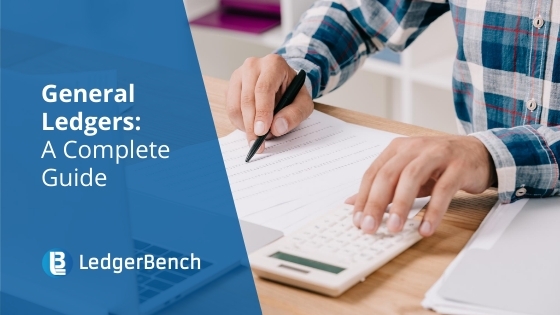
A Beginners Guide to General Ledger
Ever since business and trade continue to exist in the modern-day world, so do General Ledgers! Whether the mode to assemble one’s business financials was on an abacus, on paper, or in the current day world of computers; the general ledger has continued to be of importance regardless, the day and age you are in.
For every business, it is important to know the pivotal role played by a general ledger as it includes the culmination of all your financial reports and statements.
Businesses use ledgers to document the money that they are paying or are being paid to them.
What is General Ledger?
The general ledger summarizes all the information about your business. It includes all the company’s accounts and transactions and is the financial foundation of the business. The ledger is divided into 5 categories:
- Assets
- Liabilities
- Equity
- Revenue
- Expenses
Therefore, the number of funds that were credited and debited to your business, get accounted for in General Ledger.
Bookkeeping Services for Small Business
What are the Different Elements of a Ledger?
Let us delve a little deeper into what are the different elements of a ledger.
- Assets: Resources that are owned by the business and that give out any value are known as assets. These resources of values can range from cash, properties, inventory, and equipment, etc.
- Liabilities: Things like taxes, employee wages, mortgages, etc. come under the category of liabilities. These include the future financial debts any business has to pay.
- Equity: This involves the difference between the assets and liabilities of a business. If the proportion of liabilities in excess to that of the assets, then that is known as a case of negative equity. An inverse situation is known as positive equity.
- Revenue: The income that a business earns through the sale of its products and services is known as revenue. These include sales, royalties, or any other earnings that a business makes.
- Expenses: When a business pays in return for services and products that are purchased are known as expenses. These include rent, travel expenses, etc.
Reasons Your Business Needs a General Ledger:
The general ledger is a culmination of all your financial reports. It is a reflection of the financial position of your business; there are many reasons as to why it is important for your business to keep a general ledger:
1. It includes the accurate financial transactions of your business.
2. It helps you balance your books by giving you a complete understanding of where you need to pay more attention.
3. Filing taxes becomes easy when all your transactions are in one place for you to work on.
4. It helps you spot unusual transactions and potential fraud easily.
5. It helps you analyze key financial statements that help you with assessing your profitability, and overall financial health promptly.
Suggested Reads – Why Bank Reconciliation is Important?
What is the Difference Between General Ledger and General Journal:
There are many instances where the general ledger and the general journal are confused with each other. Where the former is a summarization of all the financial information of your business. The latter keeps a record of all the transactions made in the business.
The various financial transactions as they occur through the day are recorded in the general journal. In addition to that, when the financial transaction occurs and the source document for the same is generated, then it is recorded in the general ledger.
General Ledger and Double Entry Bookkeeping:
There are two branches of accounting, the single account method, and the double-entry bookkeeping method. The former works fine if your needs from your accounting activities are limited. Whereas, double-entry bookkeeping every transaction affects two accounts at the least. One that is debited and the other that is credited. The two should always be balanced, i.e. the total debit amount= the total credit amount.
A general ledger is used to summarize all the transactions that are recorded in the double-entry bookkeeping system.
The Backbone of Accounting Financials:
The general ledger is used to record all the company’s assets, liabilities, revenue, expenses, and equity, etc. These are then required to build and collate the balance sheet and income statements. All these together form the backbone of the accounting needs of any organization.
Wrapping Up:
Financial logistics are taken care of when all the transactions are appropriately added to General Ledger. An updated ledger with all the transactions duly recorded is the first step to ensuring the financial health of your organization. We hope that through this blog, you are able to understand what general ledgers are, and their importance for your business.

